Repeating flash
mode In the Repeating Flash ![]() mode, the SB-80DX fires repeatedly
during a single exposure, creating stroboscopic multiple-exposure effects. This mode
is useful when shooting fast-moving subjects. In the Repeating flash mode, use fresh
or fully charged batteries. Also allow enough time for the flash to recycle between
each repeating flash. In the Repeating flash mode, use a tripod to prevent camera/flash
shake, because slower shutter speeds are used.
mode, the SB-80DX fires repeatedly
during a single exposure, creating stroboscopic multiple-exposure effects. This mode
is useful when shooting fast-moving subjects. In the Repeating flash mode, use fresh
or fully charged batteries. Also allow enough time for the flash to recycle between
each repeating flash. In the Repeating flash mode, use a tripod to prevent camera/flash
shake, because slower shutter speeds are used.
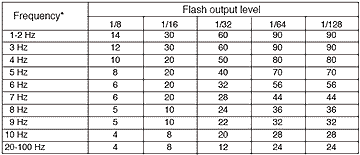 |
Setting the flash output level, the frequency (Hz) (Frequency (Hz) represents the number of flashes per second.), and the number of repeating flashes per frame Frequency (Hz) represents the number of times the flash fires per second. The actual number of repeating flashes per frame becomes lower than the one set as the shutter speed increases or the number of flashes per second decreases, because the Speedlight fires during a single exposure. |
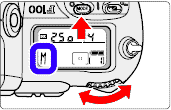 |
 |
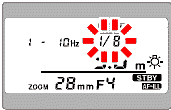 |
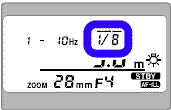 |
1 Set
the camera’s exposure mode to Manual (M). 2 Press the MODE button
to set the flash mode to the ![]() Repeating Flash mode. 3 Press the
Repeating Flash mode. 3 Press the ![]() button and the
flash output level starts blinking. Press the + or - button to increase
or decrease the values. The flash output level blinks during adjustment and stops
after 8 seconds unless an adjustment is made. The last blinking number is the one
automatically set. 4 Press the SELECT button and the flash output level
stops blinking. After that, the frequency starts blinking. 5 Repeat the procedures
above to set the frequency and the number of repeating flashes per frame. 6 Determine
the guide number according to the flash output level and zoom-head position set,
then calculate the correct aperture from the guide number and the shooting distance.
Finally set this aperture on the SB-80DX. If the ISO sensitivity is set correctly,
the flash shooting distance appears on the LCD panel to match to the flash output
level and aperture as set.
button and the
flash output level starts blinking. Press the + or - button to increase
or decrease the values. The flash output level blinks during adjustment and stops
after 8 seconds unless an adjustment is made. The last blinking number is the one
automatically set. 4 Press the SELECT button and the flash output level
stops blinking. After that, the frequency starts blinking. 5 Repeat the procedures
above to set the frequency and the number of repeating flashes per frame. 6 Determine
the guide number according to the flash output level and zoom-head position set,
then calculate the correct aperture from the guide number and the shooting distance.
Finally set this aperture on the SB-80DX. If the ISO sensitivity is set correctly,
the flash shooting distance appears on the LCD panel to match to the flash output
level and aperture as set.
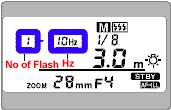 |
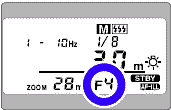 |
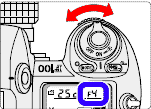 |
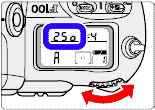 |
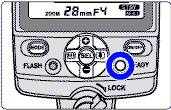 |
7 Set the same aperture on the camera or lens that is set on the SB-80DX. For cameras in Groups I and II, and Digital SLRs cameras with CPU lenses, set the SB-80DX’s aperture on the camera. 8 Set the shutter speed. Use the equation to determine the shutter speed and set that shutter speed or one slower.
Shutter speed = Number of flashes per frame ÷ Frequency of flashes (Hz) For example, if the number of flashes per frame is 10 and frequency is 5 Hz, divide 10 by 5 to get a shutter speed of 2 sec. or slower. Or you can set the shutter speed to B (bulb) to accommodate any number of repeating flashes.
9 Confirm
that the ready-light is on, then shoot. Note: Making sure the flash fires correctly
before shooting Press the ![]() button to make sure the flash fires correctly as
set. Exposure compensation in the Repeating flash mode The flash shooting
distance calculated in step number 6 is the correct exposure for the first flash
in the sequence. Therefore, repeating flash at this flash output level will result
in overexposure of any overlapping images. To prevent this, set a smaller aperture
on the camera.
button to make sure the flash fires correctly as
set. Exposure compensation in the Repeating flash mode The flash shooting
distance calculated in step number 6 is the correct exposure for the first flash
in the sequence. Therefore, repeating flash at this flash output level will result
in overexposure of any overlapping images. To prevent this, set a smaller aperture
on the camera.
FP High-Speed Flash sync |
High-speed flash synchronization
at shutter speeds between 1/250 and 1/4000 sec. (1/500 and 1/16000 sec. for the D1-Series)
is possible, allowing
you to use a wider aperture to achieve shallow depth of field and blur the background.
Do not use the built-in wide-flash adapter or Nikon Diffusion Dome. When the wide-flash
adapter is used, the zoom-head position and ![]() indicator blink on the LCD panel as a
warning. When you remove the SB-80DX from the camera, be sure to cancel FP flash
operation so that
indicator blink on the LCD panel as a
warning. When you remove the SB-80DX from the camera, be sure to cancel FP flash
operation so that ![]() disappears. If the flash unit is removed with the FP setting,
disappears. If the flash unit is removed with the FP setting, ![]() blinks as a warning.
blinks as a warning.
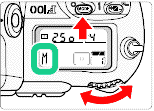 |
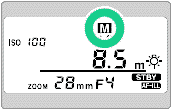 |
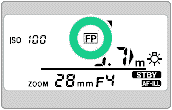 |
To operate in FP Flash Mode: 1 Set the camera’s exposure mode to Manual (M). 2 Press the MODE button until “M” appears on the LCD panel. 3 Press the + or - button until “FP” appears on the LCD panel. |
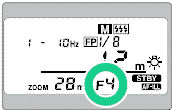 |
4.Determine the aperture and flash output level to match the main subject's shooting distance. Set the same aperture and flash output level on the SB-80DX. For cameras in Groups I and II, and Digital SLRs cameras with CPU lenses, set the SB-80DX’s aperture on the camera. If ISO sensitivity is correctly set, the flash shooting distance appears on the LCD panel to match to the flash output level and aperture as set. |
5 Set the same aperture on your camera or lens that is set on the SB-80DX. 6 Set the shutter speed between 1/250 and 1/4000 sec. (between 1/500 and 1/16000 sec. for the D1-Series). Setting a shutter speed slower than 1/250 sec. is not recommended. The faster the shutter speed, the smaller the flash output (guide number).
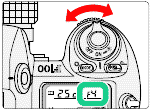 |
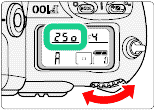 |
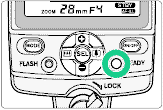 |
7 Confirm that the ready-light is on, then shoot. |
 |
Notes on continuous flash shooting Maximum number of continuous firings It is recommended to allow the SB-80DX to cool off for at least 10 minutes after the maximum number of continuous firings as shown in this table: |
Synchronization during continuous flash shooting It is possible to take up to the number of frames during continuous shooting as shown in the table below. However, if the continuous firings exceed the maximum numbers as shown in the table above, you should allow the SB-80DX to cool off for at least 10 minutes.
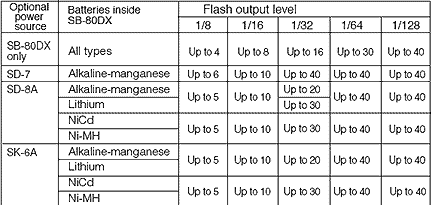 |
Maximum number of frames during continuous flash shooting (at six frames per sec.) |
Checking the correct exposure before shooting You can determine whether the subject will receive the correct exposure by test firing the SB-80DX before actually taking the picture.
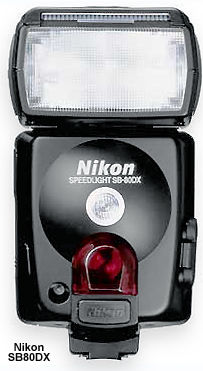 |
TTL auto flash mode Press the SB-80DX’s MODE button until “A” (Non-TTL auto flash) appears on the LCD panel. Set the same aperture on the SB-80DX as set in the TTL auto flash mode. Press the button to fire the flash. If the ready-light blinks after firing, this indicates the light may have been insufficient for correct exposure. In this case, set a wider aperture on the camera or lens, or move closer to the subject. |
Exposure compensation and flash output level Exposure compensation allows you to take well-balanced pictures by intentionally modifying the correct exposure when a subject of extremely high or low reflectivity is included in a picture or when you want to create flash photographs to match your creative preferences. Some plus compensation may be necessary when the background includes a mirror, white wall, or other highly reflective surface.
 |
Likewise, some minus compensation may be required when the background is dark or includes subjects of low reflectivity. Making exposure compensation for both the main subject and background or the main subject without affecting the background are possible, depending on the flash shooting situations. Exposure compensation on the SB-80DX can be performed in the following ways: |
Making exposure compensation for both the main subject and background In TTL/D-TTL auto flash and Auto Aperture flash Use the camera’s exposure compensation function to modify both the SB-80DX’s flash output level and the background exposure. The exposure compensation value set on the camera is not displayed on the SB-80DX’s LCD panel. Exposure compensation beyond the usable ISO sensitivity range cannot be performed. For example, with an ISO sensitivity of 100, if you try to make an exposure compensation of +3 steps on the camera (equivalent to ISO 12), which is out of the usable ISO sensitivity range (ISO 25-1000) of the SB-80DX. However, exposure compensation up to +2 steps (equivalent to ISO 25) is possible.
Making exposure compensation in the Non-TTL auto flash and Manual flash mode Exposure compensation is performed by intentionally modifying the correct aperture. In the Non-TTL auto flash mode, the correct exposure can be obtained when the same aperture is set on the camera as that set on the SB-80DX. Therefore, to make exposure compensation, vary the aperture set on the camera while retaining the aperture set on the SB-80DX or vice versa. min the Manual flash mode, calculate the proper aperture for the correct exposure from the guide number and the shooting distance. Then referring to this aperture, modify the aperture on the camera to make exposure compensation. As a basic guide, set a wider aperture on the camera or lens to make the subject brighter or a smaller aperture to make it darker.
Making exposure compensation for the main subject only In TTL/D-TTL auto flash and Auto Aperture flash Making exposure compensation for a flash illuminated subject without affecting the background exposure is called flash output level compensation. This compensation is performed with cameras in Groups I to III and Digital SLRs cameras.
In Manual flash mode Making exposure compensation for only the flash illuminated subject by intentionally modifying the SB-80DX’s flash output level (M1/1 to M1/128). For cameras in all groups.
Making exposure compensation for the background only Set the camera’s exposure mode to Shutter-Priority Auto (S) or Manual (M), and set the shutter speed to one slower than its flash sync shutter speed. With cameras providing slow-sync, set the camera’s flash sync mode to Slow sync to bring out background details in low-light situations.
Flash output level compensation |
Make exposure compensation for a flash illuminated subject without affecting the background exposure by modifying the SB-80DX’s flash output level. Available in the TTL/D-TTL auto flash and Auto Aperture flash modes. With cameras in Group III, make flash output level compensation on the camera. Flash output level compensation cannot be made on the SB-80DX. The amount of compensation set on the camera does not appear on the SB-80DX’s LCD panel.
 |
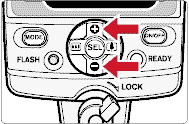 |
Operation: 1 Press the |
Note: With F80-Series/N80-Series, F70-Series/N70, and Pronea 600i/6i cameras having an exposure compensation function, you can compensate the flash output level on either the camera or SB-80DX. For details, see your camera’s instruction manual. If you use both controls, the exposure is modified by the sum total of both compensation values. In this case, the SB-80DX’s LCD panel shows only the compensation value set on the SB-80DX.
Canceling
flash output level compensation The flash output level compensation cannot be
canceled by turning the SB-80DX off. To cancel, press the ![]() or
or ![]() button to set
the compensation value back to 0.0 and make sure the exposure compensation indicator
disappears.
button to set
the compensation value back to 0.0 and make sure the exposure compensation indicator
disappears.
The flash
shooting distance range with zoom lenses having a variable aperture With zoom lenses having a variable
aperture, take note of the following before setting the aperture on the SB-80DX and
confirming the flash shooting distance range.
Lenses having a variable aperture There are two maximum aperture values indicated
in the lens model name. For example with the AF Zoom-Nikkor 28-105mm f/3.5-4.5D IF,
the maximum aperture at 28mm is f/3.5, but decreases to f/4.5 at 105mm.
Reading the aperture on the camera’s LCD panel or in the viewfinder After
composing the picture by zooming in or out, read the aperture on the camera’s LCD
panel or in the viewfinder. Then set the same aperture on the SB-80DX’s LCD panel
and confirm the flash shooting distance range. Aperture values are automatically
compensated by the camera and appear on the camera’s LCD panel or in the viewfinder.
The aperture value displayed in the aperture-direct-readout scale as seen in the
viewfinder of the Nikon F5 or other cameras is fixed and not automatically compensated.
Reading the aperture using the scale on the lens After zooming in or out to
select the appropriate composition, read the aperture using the aperture scale on
the lens. Then set the same the SB-80DX’s LCD panel and confirm the flash shooting
distance range. At wideangle zoom settings, read the aperture value at the green
index (or line). At telephoto settings, read the aperture value at the yellow index
(or dot). At intermediate settings, read the aperture value between the two indexes.
Reading the aperture using the camera’s aperture dial ![]() After
zooming in/out to select the desired composition, read the aperture using the camera’s
aperture dial. Then set the same aperture on the SB-80DX’s LCD panel and confirm
the flash shooting distance range. Set the camera’s exposure mode to Aperture-Priority
Auto (A) or Manual (M). The aperture value set on the lens cannot be
confirmed in the Programmed Auto (P) or Shutter-Priority Auto (S) exposure
mode. For cameras having TTL metering, the aperture on zoom lenses is automatically
compensated by the camera. In case of setting a larger or smaller value than the
lens aperture on the camera’s aperture dial, set the lens’ maximum or minimum aperture
on the SB-80DX.
After
zooming in/out to select the desired composition, read the aperture using the camera’s
aperture dial. Then set the same aperture on the SB-80DX’s LCD panel and confirm
the flash shooting distance range. Set the camera’s exposure mode to Aperture-Priority
Auto (A) or Manual (M). The aperture value set on the lens cannot be
confirmed in the Programmed Auto (P) or Shutter-Priority Auto (S) exposure
mode. For cameras having TTL metering, the aperture on zoom lenses is automatically
compensated by the camera. In case of setting a larger or smaller value than the
lens aperture on the camera’s aperture dial, set the lens’ maximum or minimum aperture
on the SB-80DX.
Slow-sync flash mode/Red-Eye reduction control
Slow-sync flash The flash is controlled at a slow shutter speed to obtain the correct exposure for both the main subject and background in low-light situations or at night. Available with cameras providing slow-sync. You cannot set the slow-sync function on the SB-80DX directly. Set it on the camera. Since slow shutter speeds are usually used, use a tripod to prevent camera shake.
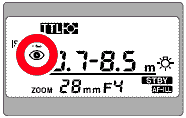 |
Red-Eye reduction To prevent the center of your subject's eyes from appearing red in color pictures, the SB-80DX’s Red-Eye reduction lamp lights up for approx. 1 sec. before the picture is taken. Available with cameras having Red-Eye reduction control. You cannot set redeye reduction on the SB-80DX directly. Set it on the camera. After setting your camera to Red-Eye reduction, make sure that “ |
Red-Eye reduction
with slow-sync flash mode min this mode, Red-Eye reduction is combined with slow
sync. Available with cameras having Red-Eye reduction with slow-sync. You cannot
set this mode on the SB-80DX directly. Set it on the camera. After setting your camera
to Red-Eye reduction with slow sync, make sure that “![]() ” appears on the SB-80DX’s
LCD panel. Since slow shutter speeds are usually used, use a tripod to prevent camera
shake.
” appears on the SB-80DX’s
LCD panel. Since slow shutter speeds are usually used, use a tripod to prevent camera
shake.
Rear-curtain sync & Modeling illumination
Rear-curtain sync In normal flash synchronization, when shooting fast-moving subjects at slow shutter speeds, this usually results in unnatural-looking pictures where the subject frozen by the flash appears behind or within the blurred movement. Rear-curtain flash sync creates a picture in which the blur of a moving subject (for example, the taillights of a car) appears behind the subject and not in front. Available with cameras providing rear-curtain sync. You cannot set this mode on the SB-80DX directly. Set it on the camera. Since slow shutter speeds are usually used, use a tripod to prevent camera shake. This function does not operate in either the FP High-Speed flash sync or Repeating flash mode. In multiple flash, the master flash unit can be set to either front-curtain or rear-curtain sync flash. Note: The slave units cannot be set to rear-curtain sync flash.
Modeling illumination - Applicable to ALL Nikon cameras. Press the Modeling illuminator button and the modeling illuminator lights up (or the flash fires) repeatedly at a reduced flash output level. This is useful for checking the illumination and the shadows cast on the subject before actually taking the picture. The modeling illuminator lights up for a maximum of approx. 3 sec. while the modeling illuminator button is pressed. The modeling illuminator can be set to operate only after the ready-light comes on. The modeling illuminator will not light up in the wireless slave flash mode
Autofocus flash operation in dim light |
When the light is too dim for normal autofocus operation, the SB-80DX’s AF-Assist Illuminator enables you to perform autofocus flash photography in dim light. In dim light, the AF-assist illuminator turns on automatically when the camera’s shutter release button is lightly pressed if an AF lens is mounted and the camera’s focus mode is set to S (Single Servo AF with focus priority), AF, or A. The effective shooting distance with the AF-assist illuminator is approx. 1m to 10m with a 50mm f/1.8 lens or shorter, depending on the lens in use. Usable lens focal length: 24mm to 105mm (35 to 105mm for F-501/N2020 cameras).
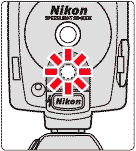 |
The AF-Assist Illuminator is activated when |
For cameras having a built-in Speedlight Even when the camera’s AF-Assist Illuminator is set to activate, the SB-80DX’s AF-Assist Illuminator is given priority and the camera’s AF-Assist illuminator does not light up. (The camera’s AF-Assist Illuminator lights up when the SB-80DX’s AF-Assist Illuminator is canceled.). With F60-Series/N60 cameras, the AF-Assist Illuminator lights up while shooting at full output manual. With F80-Series/N80-Series, and F65-Series/N65-Series cameras, the camera’s AF-Assist Illuminator lights up when the SB-80DX’s AF-Assist illuminator is canceled. To cancel the camera’s AF-Assist Illuminator, cancel it on the camera.
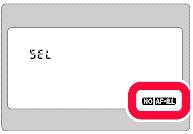 |
Activating and canceling the AF-Assist illuminator using Custom settings 1 Press the |
| Previous | NEXT | 4/6 Bounce Flash, Close-up flash, Multiple Flash (Auto & Manual)
Index Page | Page II | Page III | Page IV | Page V | Page VI
| Back | Index Page - Nikon Flash Photography with Nikon F5
Relative:
Nikon AF-TTL Speedlight Models: Nikon SB-800 | Nikon SB-600 | Nikon SB-30 | Nikon
SB-29(s)
(2000) | Nikon SB-28 (1997) |
Nikon
SB-27 (1997)
| Nikon
SB-26
(1994) | Nikon SB-25 (1992) |
Nikon
SB-24 (1988) |
SB-23 | SB-22
(1987) |
SB-20 (1986)
Nikon AF-TTL Speedlight DX-Series: Nikon SB-28DX (1999)| SB-50DX (2001) |
SB-80DX (2002)
Additional information on various Nikon MF Bulb Flash - Nikon MF-Speedlights
SB-1 ~ SB-21A/B
| Back | Main Index Page - Nikon F5 Professional SLR camera
The Camera - Background,
Issues & Summary
Basic
Features | Focusing | Metering Systems | Exposure Control | Reliability Issues | Nikkor lens Compatibility
Prisms/Finders - Index page
- 2 parts
Film Backs: Index
Page - 1 parts
Focusing Screens - Index Page
- 1 part
Flash System - Index
Page
- 3 parts
System Accessories: | Power Sources | Cases | Remote
Control | Miscellaneous
Macro
Photography
- Related info on Micro-Nikkor lenses
Technical Specification for Nikon F5
Main
Reference Map
/ Nomenclature
Resource Centre:
Instruction Manuals
Nikon
F5 Camera Body
- 18
parts
MF-28
Multi-Function Back
HTML - 8
parts
PC
Links - Photo Secretary
- 2
parts
AF-TTL Speedlights:
SB-28 / SB28DX | SB29(s) info | SB30 | SB50DX | SB80DX | SB600 info | SB800
Variants: F5 50th Anniversary Model | Nikon/Kodak DCS-620 | DCS-720 Digital Still SLR camera
| Nikon F | Nikon F2 | Nikon F3 | Nikon F4 | Nikon F5 | Nikon F6 | Nikkormat / Nikomat | Nikon FM | Nikon FE/ FA | Nikon EM/FG/FG20 | Nikon Digital SLRs | Nikon - Other models |
The Eyes of Nikon:-
Nikon Auto Focus Nikkor lenses:- Main
Index Page
Nikon Manual Focus Nikkor lenses:- Fisheye-Nikkor Lenses - Circular | Full Frame |
Ultrawides Lenses - 13mm15mm18mm20mm | Wideangle Lenses - 24mm28mm35mm | Standard Lenses - 45mm 50mm 58mm | Telephoto
Lenses - 85mm105mm135mm180mm & 200mm | Super-Telephoto Lenses - 300mm 400mm 500mm 600mm 800mm 1200mm |
 Index Page |
Special
Application lenses: Micro-Nikkor Lenses - 50mm~55mm -60mm 85mm -105mm 200mm Micro-Zoom 70-180mm Perspective Control (PC) - 28mm 35mm PC-Micro 85mm Dedicated Lenses for Nikon F3AF: AF 80mm f/2.8 | AF 200mm f/3.5 EDIF Depth of Field Control (DC): 105mm 135mm Medical Nikkor: 120mm 200mm Reflex-Nikkor Lenses - 500mm 1000mm 2000mm Others: Noct Nikkor | OP-Nikkor | UV Nikkor 55mm 105mm | Focusing Units | Bellows-Nikkor 105mm 135mm Nikon Series E Lenses: 28mm35mm50mm100mm135mm | E-Series Zoom lenses: 36~72mm75~150mm70~210mm |
MF Zoom-Nikkor Lenses: 25~50mm | 28~45mm | 28~50mm | 28~85mm | 35~70mm | 36~72mm E | 35~85mm | 35~105mm | 35~135mm | 35~200mm | 43~86mm | 50~135mm | 50~300mm | 70~210mm E | 75~150mm E | 80~200mm | 85~250mm | 100~300mm | 180~600mm | 200~400mm | 200~600mm | 360~1200mm | 1200~1700mm
Tele-Converters: TC-1 | TC-2 | TC-200 | TC-201 | TC-300 | TC-301 | TC-14 | TC-14A | TC-14B | TC-14C | TC-14E | TC-16 | TC-16A | TC-20E
Recommended links to understand more technical details
related to the Nikkor F-mount and production Serial Number:
http://rick_oleson.tripod.com/index-153.html by: my
friend, Rick Oleson
http://www.zi.ku.dk/personal/lhhansen/photo/fmount.htm by: Hansen,
Lars Holst
http://www.mir.com.my/rb/photography/hardwares/nikonfmount/lens2.htm
http://www.photosynthesis.co.nz/nikon/serialno.html
| Back | Index Page of Digital
Nikon SLR cameras
|
Back | Main Index Page of Pictorial
History of Nikon SLR cameras
![]()
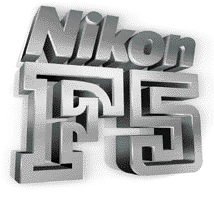 |
| Message Board | for Nikon F5 Series SLR model(s) | |
HOME - Photography in Malaysia |
![]()
A resource dedicated to my kids, Alvin Foo & Esther Foo- one day,
BOTH might need to use all these information for his/her Nikon F5A camera.
Volunteered Maintainer(s) for the Nikon F5 Message Board: Tony Davies-Patrick, UK; Rick Oleson, US; Koh Kho King, Malaysia.
Credit: Mr. Chuck Hester, US for his text re-editing skill for this site; Our staff, HowKiat® who created the 3D-Nikon F5 logo. Mr. Lew Chee Wai of YL camera for lending his F5 for me to take some shots appeared in this site. All those nice folks who have contributed their images, in particular Mr. Mike Long, Edwin leong, Palmi Einarsson, Sergio Pessolano, Fred Kamphues, Harry Eggens, Curtis Forrester, Nick (Natures Moments), Sandra Bartocha; fellow countrymen, Vincent Thian, Koh Kho King, Philip Chong, CY Leow etc. and contributions from a few nice folks from Photo Malaysia Forum. Disclaimers & acknowledgments: Certain content and images appeared in this site were either scanned from official marketing leaflets, brochures published by Nikon and/or contribution from surfers who claimed originality of their own work for public publishing in this website, where majority of the extracted information are used basing on educational merits. The creator of this site will not be responsible for any discrepancies that may arise from any possible dispute except rectifying them after verification from respective source. Neither Nikon or its associates has granted any permission(s) in using their public information nor has any interest in the creation of this site. "Nikon", "Nikkormat", "Nippon Kokagu KK" "Silent Wave", "Focus Tracking Lock-on", "Nikkor" & other applicable technical/business terms are registered trade name(s) of Nikon Corporation Inc., Japan. Site made with an Apple G5 IMac.